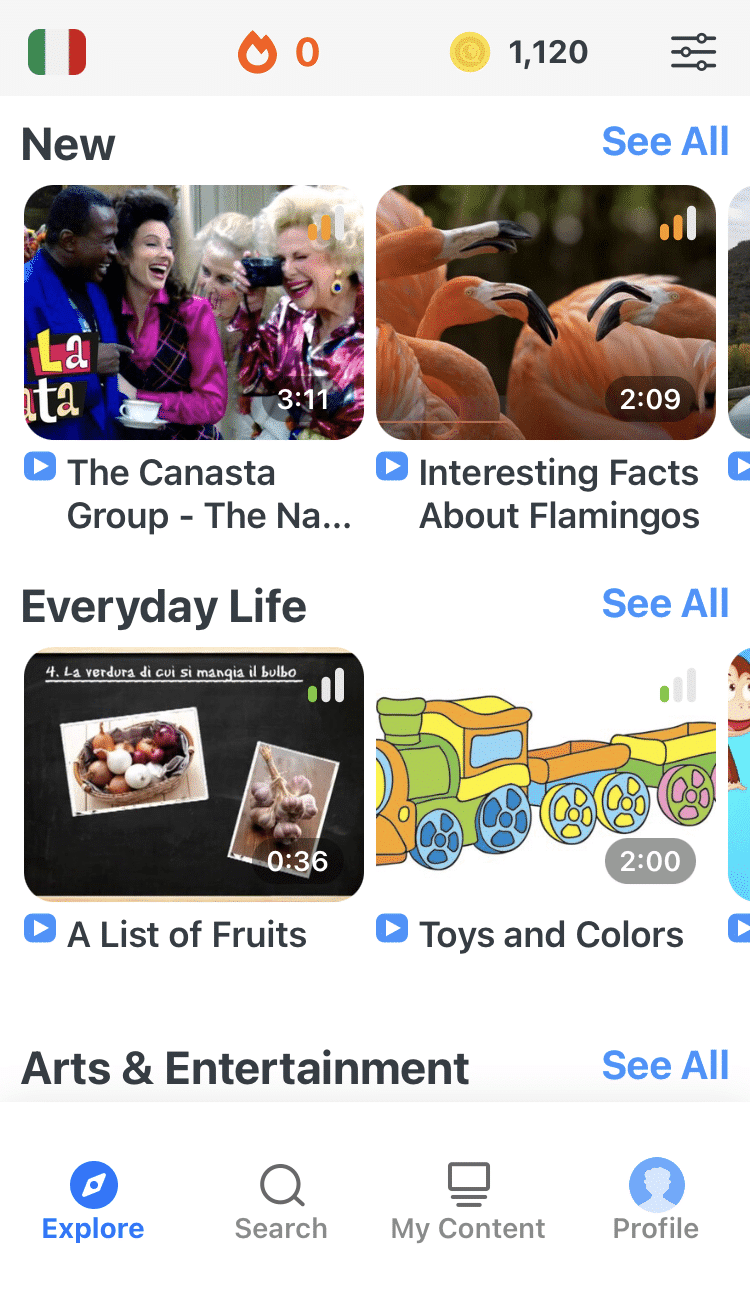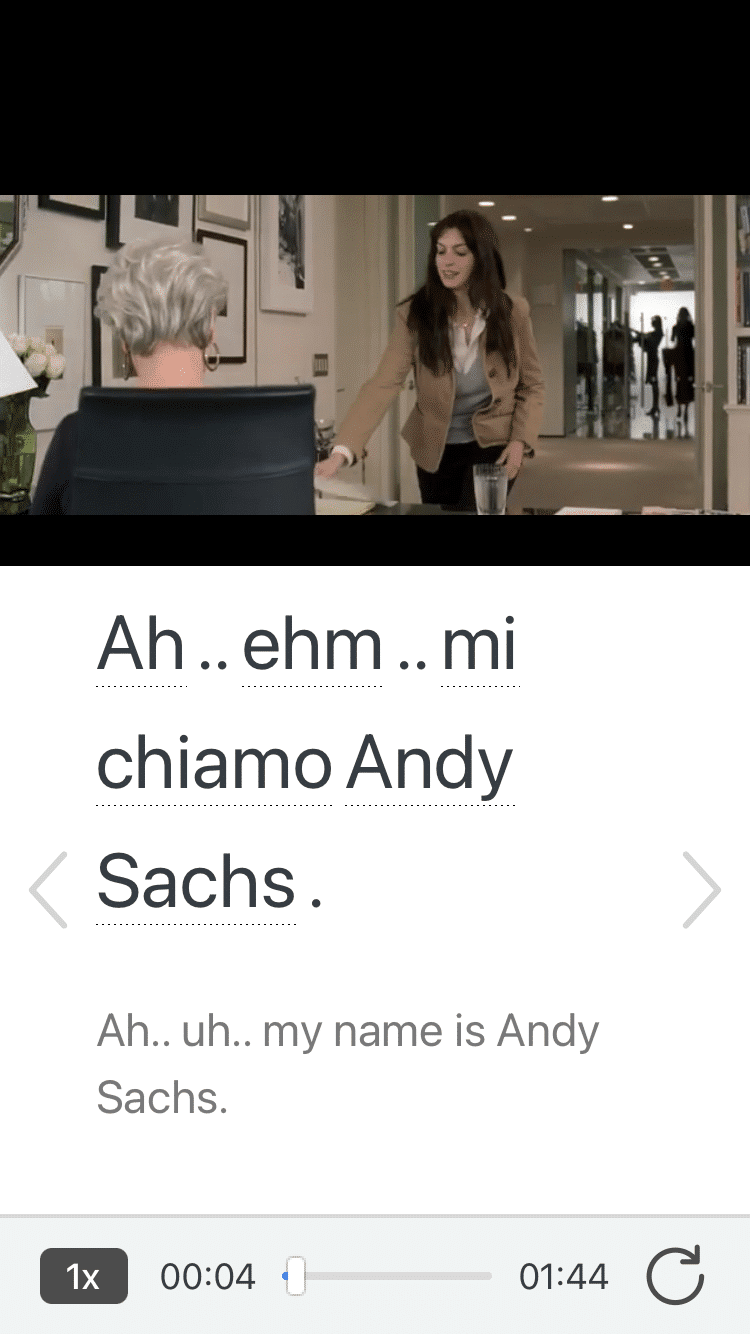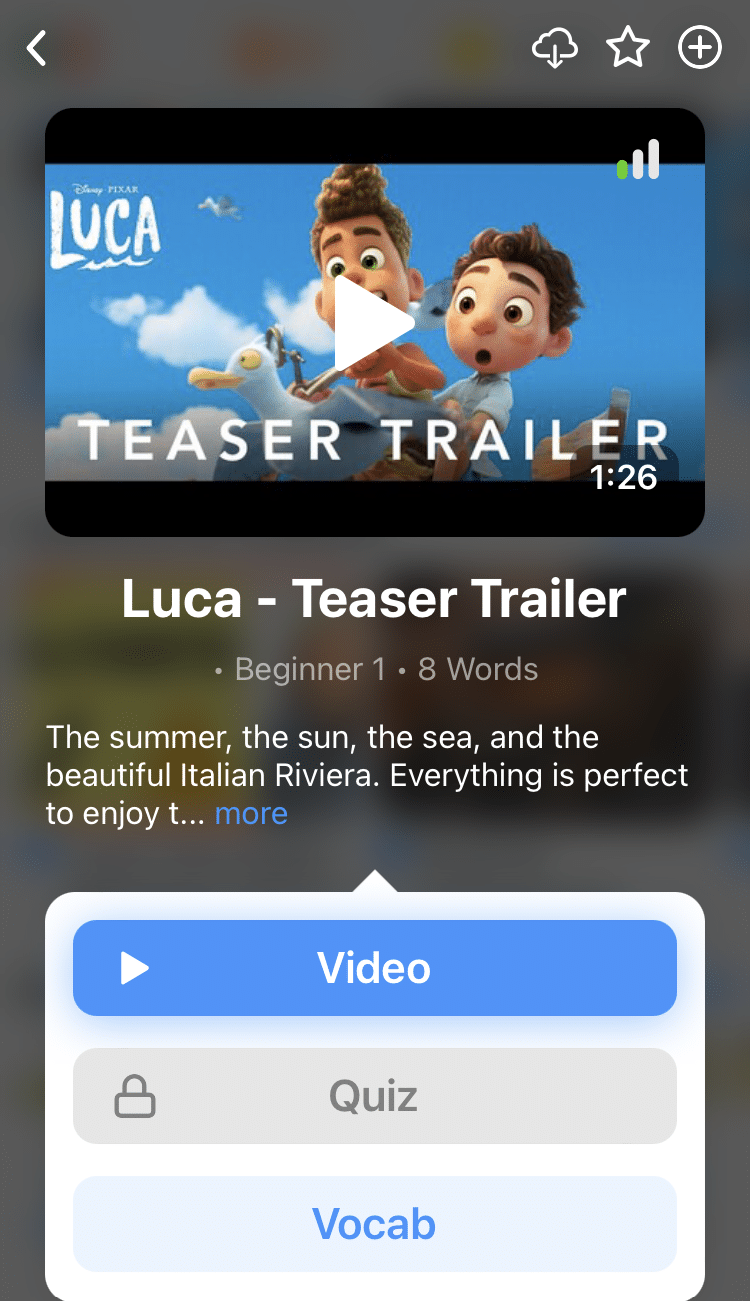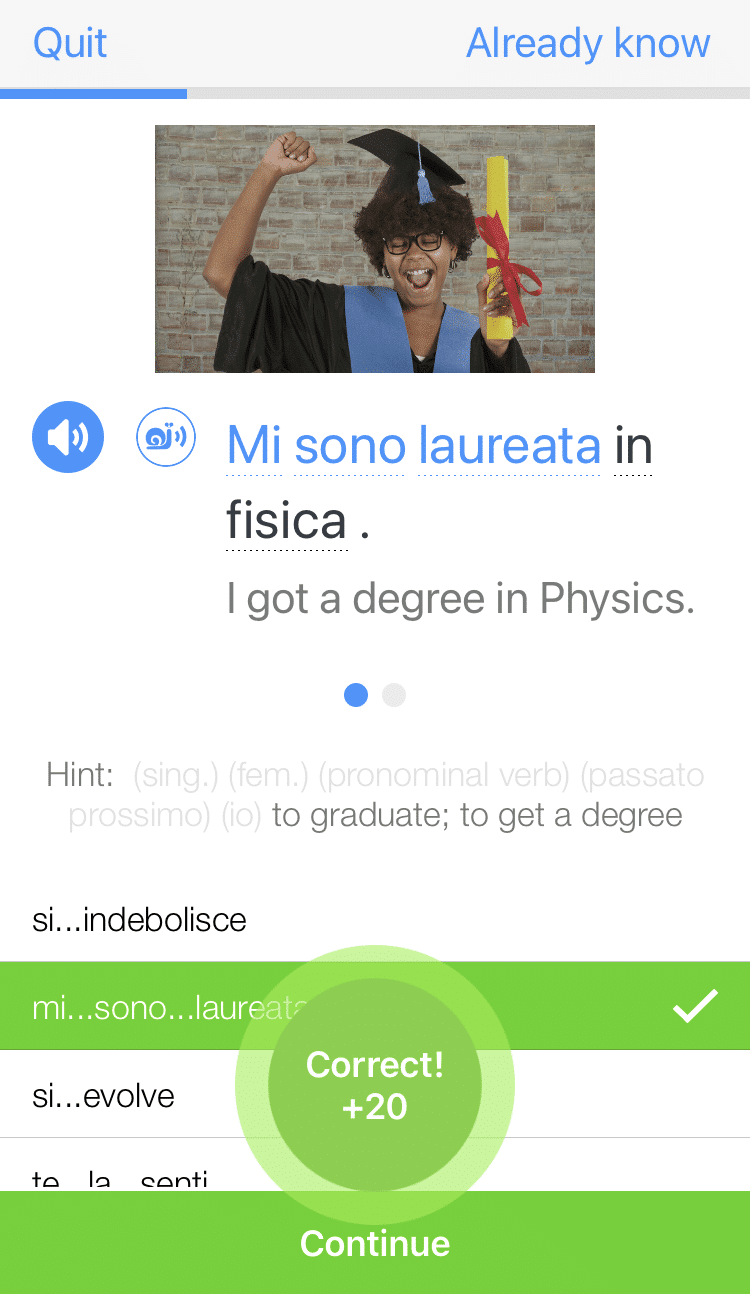
How to Order Food in Italian
If you’re fortunate enough to find yourself vacationing in Italy, there’s no doubt that you’ll stop by for a meal at an Italian restaurant.
Fortunately, ordering food and drink is as easy as one, two, three! And maybe four and five, if you count the extra courses typically served at robust Italian meals.
Whether or not you indulge in the extra courses, there’s definitely no need to go hungry when you’re in the vicinity of an authentic Italian restaurant.
Mangia! (Eat up!)
Contents
- Where Italians Eat and Types of Italian Restaurants
- What to Expect During an Italian Meal
- Ordering Food in Italian
- And One More Thing...
Download: This blog post is available as a convenient and portable PDF that you can take anywhere. Click here to get a copy. (Download)
Where Italians Eat and Types of Italian Restaurants
If you find yourself in Italy, then the different types of restaurants and eateries might be overwhelming or confusing. These are the most common ones:
- Il ristorante (restaurant) — A ristorante is typically the most expensive option.
- La trattoria (tavern) — A trattoria is a little less formal than a ristorante, serves more local dishes and is more moderately priced. It’s often a family-owned business.
- La tavola calda (cafeteria) — Tavola calda literally translates to “hot table” and you choose from the prepared dishes displayed behind the glass counter. Side dishes often cost about three euros, and main course dishes are a bit more expensive.
- La paninoteca (sandwich shop) — A sandwich shop which sells panini (sandwiches). Note that the singular is un panino.
- Il bar (bar) / Il caffè (café) — These small places mainly serve drinks, as well as aperitivi (snacks/appetizers), dolci (desserts) and piccole pizze or pizzette (tiny pizzas). It’s a bit cheaper to have your drink al bar (at the counter), and there may also be differences between dentro (inside) and sulla terrazza (outside tables).
- La pizzeria (pizza restaurant) — Place where you eat pizza.
What to Expect During an Italian Meal
Italy is a country that’s well known for its expansive nature regarding nearly every aspect of life, which applies to its culinary attitudes, too. In other words, there’s a lot of incredible food in Italy—and you’ll want to try it all!
Colazione (breakfast), is relatively simple, often at the bar of a café:
- To drink, you’ll have a cappuccino.
- To eat, you might have a cornetto (croissant) or some other kind of bread or pastry.
For pranzo (lunch), it could be any of the following:
- For a quick meal, it could be something like panino or pizza.
- If there’s time for a longer sit-down meal, it could be a primo (first course) like pasta, gnocchi or rice, along with some contorno (side dishes). Read more about these below, as lunches and dinners can be quite similar.
In the middle of the day, you might also have a merenda (afternoon snack).
The Italian cena (dinner meal) is comprised of several courses:
- Initially, there’s an antipasto before the meal which is food to nibble on, like cheese, cured meats, crackers and olives.
- Primo (first course) is usually pasta, soup, rice or polenta.
- Secondo (second course) is the main course of the meal. Usually, it’s a simple meat or fish dish.
- Sometimes, vegetable side dishes are served with the meat portion. They’re called contorno (loosely translated to mean “contours”) and are often made from whatever’s fresh at the produce market.
- Americans generally eat insalata (salad) before a main course but in Italy, insalata is sometimes served with the vegetable dishes.
If you think you’re done eating after the main course, think again! Don’t get out of that chair yet, because there are still many appetizing delights to savor:
- Formaggi e frutta (cheese and fruit) are brought to the table after the meal’s main course.
- Dolce (sweet) is the actual dessert course. Hopefully, you’ve saved room for some tiramisù, gelato or a mouth-watering cannoli.
- Caffè (coffee) served in Italian restaurants is usually espresso. If you’d like a cup of coffee similar to what most Americans drink in their local coffee shops, ask for a Caffè Americano (American coffee) and you’ll feel right at home.
- After caffè, you might consider a digestivo (digestive). It’s a small glass of liquor that some Italians feel helps digestion after a full meal.
Ordering Food in Italian
Whether it’s a humble café in a piazza (plaza) or an upscale restaurant in the heart of Rome, eating in Italy is a delightful experience. The music, tinkling fountains, dripping candles and beautiful artwork all set the tone for more than a quick bite.
Eating is a social occasion in the Italian culture, so expect to be welcomed into an eatery as effusively as if you were stopping by a friend’s home for a meal. You’ll most likely be treated like family as soon as you walk through the door—and that’s a great way to begin a meal, isn’t it?
Getting a Seat and Asking for a Menu
When you’re greeted at the door, you’ll want to ask:
“Possiamo avere un tavolo?” (“Can we have a table?”)
You might get a cozy seat by a window that’ll allow you to people-watch while you eat! If you’re not handed a menu immediately upon being seated, it’s okay to say:
“Posso vedere il menu, per favore?” (“Can I see the menu, please?”)
Ordering Drinks in Italian
The first question from your server will probably be asking you what you’d like to drink:
“Da bere?” (“To drink?”).
Some possible choices include:
succo (juice)
birra (beer)
tè freddo (ice tea)
acqua frizzante (sparkling water)
acqua minerale (mineral water)
vino rosso (red wine)
vino bianco (white wine)
To ask for any of these, simply begin your sentence with this useful phrase:
“Vorrei…” (“I would like…”)
This sentence opener covers food and drink requests, as well as just about any other Italian request. It’s an excellent phrase to add to your repertoire. For instance, you might say:
“Vorrei dell’acqua, per favore.” (“I would like water, please.”)
“Vorrei un litro di vino della casa.” (“I would like a liter of house wine.”)
Whetting Your Appetite with Appetizers
Once you’ve had a chance to look over the menu and the staff is ready to take your order, your server might ask:
“Che cosa vi porto?” (“What can I get for you?”)
If you’re unsure of what to order it’s okay—encouraged, even—to ask for suggestions. The waitstaff could be very helpful! You can ask:
“Cosa ci consiglia?” (“What do you suggest?”)
This is sure to elicit a few options for your consideration. To begin a meal you can ask for one of these, both of which are great choices:
antipasto della casa (house antipasto)
antipasto misto (mixed antipasto)
Ordering mixed antipasto means that the waiter will bring a platter of small samples to the table.
Placing Your Order: The First Course
When you’re asked this question, you have any number of options:
“Per primo?” (“For the first course?”)
Most first course menu items feature pasta or risotto. Some possible responses to this are:
“Pasta con olio e aglio, per favore.” (“Pasta with oil and garlic, please.”)
“Vorrei il risotto ai funghi, per favore.” (“I would like mushroom risotto, please.”)
Just remember that adding per favore (please) always makes any interaction more pleasant!
Keeping It Going: The Second Course
Once the first course is out of the way, your waiter might ask this:
“Per secondo?” (“For the second course?”)
Since this is the meat course, here are a couple of words that may prove important:
pollo (chicken)
pesce (fish)
manzo (beef)
maiale (pork)
Your order might sound like this:
“Vorrei una bistecca al sangue, per favore.” (“I would like a rare steak, please.”)
“Vorrei una bistecca ben cotta, per favore.” (“I would like a well-done steak, please.”)
Adding the “Contours”: Side Orders in Italian
When the waiter asks this, it’s your chance to add the “contours” to your meal by choosing from the vegetable dishes on the menu:
“Per contorno?” (“For sides?”),
Some things to try include:
zucchine fritte (fried zucchini)
patate (potatoes)
spinaci con aglio (spinach with garlic)
If you want your meat and vegetables served together, just ask like this:
“Può portare tutto insieme?” (“Can you bring everything together?”)
The Sweet Finale: Ordering Dessert in Italian
Dolci fatti in casa (desserts made in house) round out a meal nicely. Typically, the homemade desserts are divine, so loosen your waistband and indulge!
Now’s not the time to be shy. Sample some (or all!) of these:
cannoli (pastry shells with a sweet, creamy filling)
panettone (sweet bread filled with dried fruits and, often, chestnuts)
panna cotta (thickened sweetened cream formed into a mold)
…and everything else on that dessert tray!
Ending Your Italian Meal
To bring your dining experience to an end, use the following phrase:
“Il conto, per favore.” (“The bill, please.”)
That was fun, wasn’t it?
To learn more useful vocabulary and phrases, you can find videos relating to ordering food and drinks in Italian on the FluentU program.
FluentU takes authentic videos—like music videos, movie trailers, news and inspiring talks—and turns them into personalized language learning lessons.
You can try FluentU for free for 2 weeks. Check out the website or download the iOS app or Android app.
P.S. Click here to take advantage of our current sale! (Expires at the end of this month.)
If you’re fortunate enough to visit historic Rome, Naples (where pizza was invented!), picturesque Sicily or any other fabulous Italian city or village, you’ll be able to order like a native with these phrases in your conversational repertoire.
Italians are known for being very friendly and for many, mealtimes are the biggest social events of the day.
So linger like the locals do. Talk and eat, then eat and talk. Don’t be in a hurry to eat and run—savor the experience. Cultivate an Italian lifestyle—one bite at a time!
Download: This blog post is available as a convenient and portable PDF that you can take anywhere. Click here to get a copy. (Download)
And One More Thing...
If you're as busy as most of us, you don't always have time for lengthy language lessons. The solution? FluentU!
Learn Italian with funny commericals, documentary excerpts and web series, as you can see here:

FluentU helps you get comfortable with everyday Italian by combining all the benefits of complete immersion and native-level conversations with interactive subtitles. Tap on any word to instantly see an image, in-context definition, example sentences and other videos in which the word is used.

Access a complete interactive transcript of every video under the Dialogue tab, and review words and phrases with convenient audio clips under Vocab.

Once you've watched a video, you can use FluentU's quizzes to actively practice all the vocabulary in that video. Swipe left or right to see more examples of the word you’re on.

FluentU will even keep track of all the Italian words you’re learning, and give you extra practice with difficult words. Plus, it'll tell you exactly when it's time for review. Now that's a 100% personalized experience!
The best part? You can try FluentU for free with a trial.
Start using the FluentU website on your computer or tablet or, better yet, download the FluentU app from the iTunes or Google Play store. Click here to take advantage of our current sale! (Expires at the end of this month.)



